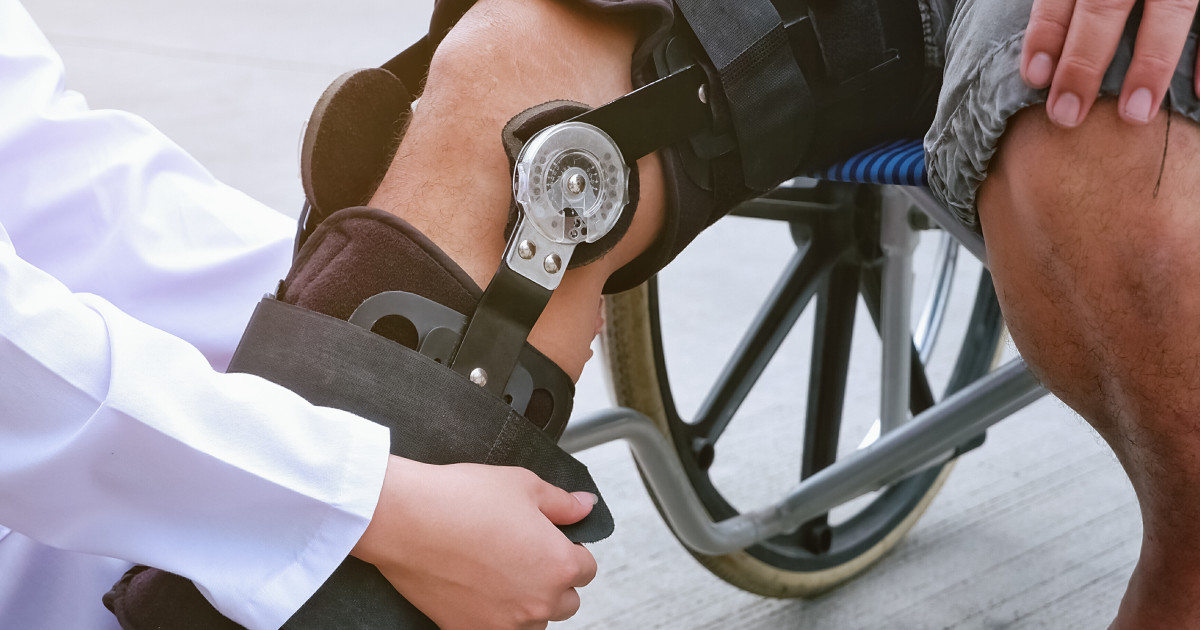Copyright Men's Journal

Unfortunately, ACL injuries are far too common, with between 100,000 and 200,000 ACL tears occurring every year, according to the Cleveland Clinic. The ACL, or anterior cruciate ligament, is an important ligament in the knee that connects the thigh bone to the shin bone. It provides stability to the knee, particularly during movements that involve twisting, cutting, or sudden changes of direction. The most common sign of an ACL tear is the classic “pop” that athletes often report feeling or hearing at the moment of injury. Individuals typically experience a sensation of instability, as if their knee may give out. Swelling usually develops following the injury, and pain may limit the ability to walk or bear weight. Competitive athletes are among the most at risk for ACL tears. Over the weekend, Tucker Kraft of the Green Bay Packers tore his ACL in his right knee, ESPN confirmed. He joins a growing list of athletes recently sidelined by this injury, including 17 women’s soccer players and several basketball players—such as Lamont Butler, Chloe Kitts, and Dominika Paurová—who all tore their ACLs just in October. Despite how common ACL injuries are, recovery is lengthy, and there is still a lot to understand about how to prevent and successfully treat them. Tommy Mandala, DPT, of All in ACL, clarified a few common misconceptions about ACL injuries. How to Prevent ACL Injuries The greatest risk factors for ACL injuries are participation in cutting and pivoting sports—like soccer, skiing, and basketball—which put the knee in positions that increase the likelihood of a tear. Women also have a higher risk of injury, though nobody is completely safe. Still, there are measures you can take to reduce your risk of injury. “ACL injury prevention training programs that include both a strength and a plyometric component when performed at least twice a week for a minimum of 20 minutes were shown to reduce the rate of ACL tears by 53 percent,” Mandala said. “Although there is still debate about the mechanism through which these programs reduce the risk of reinjury, we know that targeted strengthening and plyometric exercises can substantially reduce your risk of suffering an ACL injury.” Do ACL Tears Require Surgery? ACL reconstruction surgery involves replacing the torn ligament with a graft, either with an autograft or an allograft. The goal is to restore knee stability and allow a safe return to sport or activity. But, tearing your ACL does not automatically mean surgery is necessary. For older adults or individuals with no plans to return to cutting and pivoting sports, non-surgical management is often preferred. Even athletes may sometimes avoid surgery, depending on their sport, activity level, and knee stability. However, surgery is typically the most reliable option for long-term stability and performance “For those who plan to get surgery, pre-operative rehab is a key to a successful outcome. In fact, studies have shown that your functional ability two years after surgery is impacted by your pre-op strength. Thus, for anyone who has had an ACL injury, there is no need to rush into surgery. You should get started on rehab to both increase your chances at a successful post-op outcome and give you a clearer picture of how you may progress non-operatively,” Mandala says. How Long Does It Take to Recover From ACL Surgery? If you do end up getting surgery, a typical ACL rehab timeline is at least 12 months and can often take longer, according to Mandala. Adults who do not plan to return to contact, competitive sports may regain regular activity sooner. While past recommendations suggested six to nine months, returning to sport before 12 months increases the risk of reinjury. “While nine months is the absolute minimum that an athlete should return to their sport, the reality is that most athletes are not ready to pass return to sport criteria at that time. In fact, almost 60 percent of athletes don’t pass return to sport testing criteria even at two years post-op,” Mandala says. ACL Rehab Protocol A strong post-op ACL rehab progression protocol includes: Early Phase: Passive range of motion exercises and gentle muscle activation to maintain joint mobility and prevent atrophy. Strengthening Phase: Machine-based resistance exercises that gradually build lower-body strength, progressing to functional bodyweight exercises. Advanced Strength & Conditioning: Barbell and functional training to rebuild the strength needed for jumping, running, and dynamic movements. Return-to-Sport Testing: Strength assessments and single-leg hop tests to evaluate readiness for dynamic activities.



